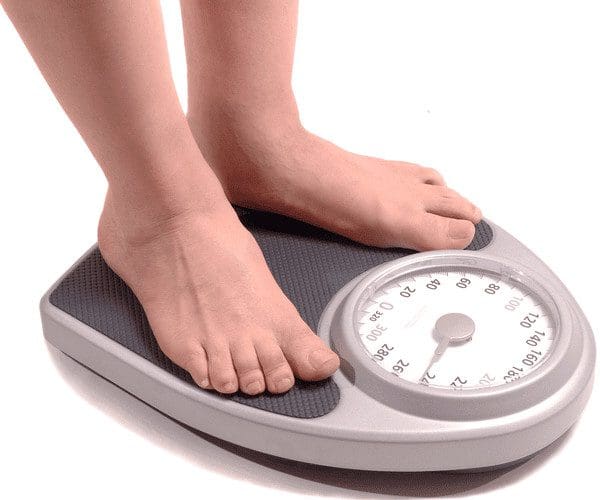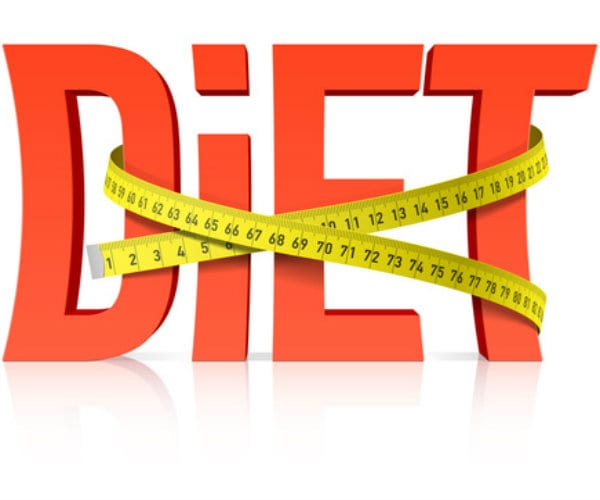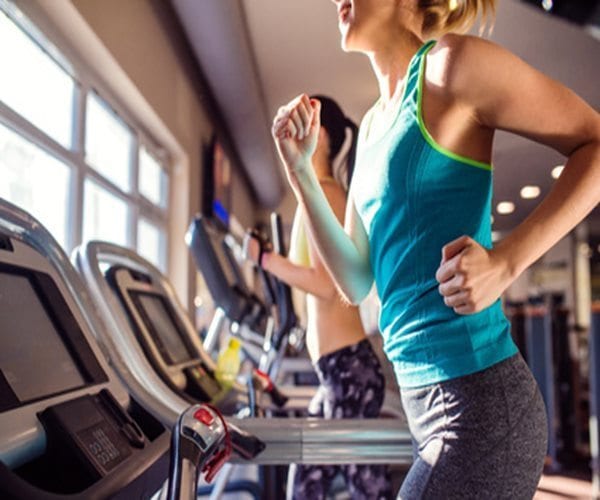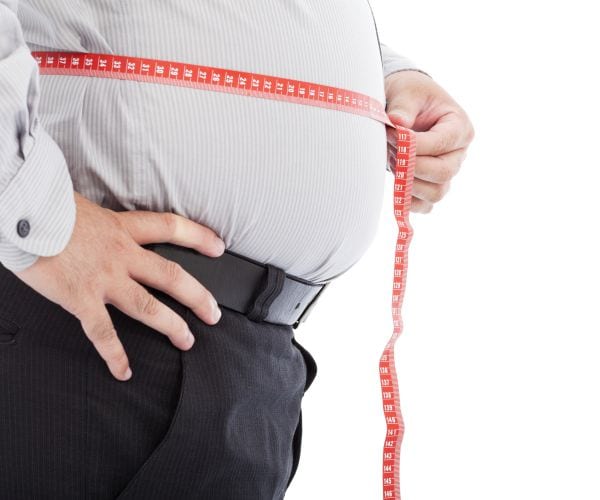Fitness
Back and Spinal Fitness at PUSH as Rx leads the field with a laser focus on supporting our youth sports programs. The PUSH-as-Rx System is a sport-specific athletic program designed by a strength-agility coach and physiology doctor with a combined 40 years of experience working with extreme athletes.
The program is the multidisciplinary study of reactive agility, body mechanics, and extreme motion dynamics at its core. A clear quantitative picture of body dynamics emerges through continuous and detailed assessments of the athletes in motion and under directly supervised stress loads.
Exposure to the biomechanical vulnerabilities is presented to our team. Immediately, we adjust our methods for our athletes to optimize performance. This highly adaptive system with continual dynamic adjustments has helped many of our athletes return faster, stronger, and ready post injury while safely minimizing recovery times.
Results demonstrate clear improved agility, speed, decreased reaction time with greatly improved postural-torque mechanics. PUSH-as-Rx offers specialized extreme performance enhancements to our athletes no matter the age.

by Dr Alex Jimenez DC, APRN, FNP-BC, CFMP, IFMCP | Diets, Fitness
It’s no surprise — overweight children who don’t properly learn self-regulating habits likely become obese adults. What is surprising is that one of the most common ways to help — restricting children’s diets — actually compounds the problem.
That’s the thrust of a new study by University of Illinois researchers who point to a disturbing pattern: Parents shame by withholding food due to weight gain, then children cope with the negative emotions by overeating.
Further exasperating the trend, overweight children are often rewarded with food by parents, and as they grow older, the children reward themselves with food.
Researchers who studied the pattern added a genetic component as well to better understand obesity. They reported that a child’s genetics, relating to cognition and emotion, likely play a key role. They found that when biological conditions were just right, a nudge by the social aspect sets kids on a path to obesity.
Kelly Bost, co-author of the study (published in Pediatric Obesity), and professor of child development at the University of Illinois, said: “When parents offer food to children whenever they are upset, children may learn to cope with their negative emotions by overeating, and they start to develop this relationship with food early in life; eating — especially comfort food — brings a temporary soothing. People intuitively understand that.”
The findings support the team’s hypothesis that a correlation exists between all factors: parenting approaches, combined with a child’s genetic make-up and restrictive feeding, and the child’s weight and the child’s propensity to be obese.
Bost said that children can effectively learn control for themselves: “Some of the things parents do, they may not think are related to how children are developing their eating habits. The ways parents respond or get stressed when children get upset are related in an indirect way. The way we respond to that emotion can help children to develop skills for themselves, to self-regulate, so that everyday challenges don’t become overwhelming things that they have to manage with respect to food.”
Bost and her team used data from the “Strong Kids” program, outreach developed by The Oregon Resiliency Project, an organization that is based on “research, training, and outreach effort aimed at social and emotional learning, mental health promotion, and social-emotional assessment intervention” of children, according to the organization’s website.
The team examined information about parents’ feeding styles, and how they typically reacted to their children’s (ages 2.5 to 3 years) negative emotions. The researchers examined these factors in combination with genetic data.
For the genetic factor, they looked at the COMT gene, a gene known for regulating cognition and emotion. This gene is the gatekeeper for dopamine, which controls the brain’s reward and pleasure centers.
Bost and her team studied minute variances in the gene pool to determine which children might be more susceptible to negative emotions or stress. They based their genetic research on the breakdown of amino acids in proteins that could lead to personality differences. One of them is the change produced by genetics in the form of a single part of our DNA: the nucleotide polymorphisms (SNPs). There are many types of SNPs; some affect the composition of protein and, depending on the change, affect the amount of dopamine in the brain, as presented by Psychology Today. Dopamine controls the brain’s reward and pleasure centers.
One type of SNP can change an amino acid from valine (Val) to methionine (Met). While largely academic, these two types of proteins influence emotion. Bost explained it best in the study: “We all carry two copies of genetic information — one from Mom, and one from Dad. In a person with Val/Val, the COMT system works three to four times faster than those with other combinations do, and therefore accumulates less dopamine in the front of the brain. Children who have at least one copy of Val tend to be more resilient emotionally. Those who are Met carriers have the propensity to be more reactive to negative emotion or stress.”
This genetic component was combined with the researchers’ studies. “We know that how parents respond to their children’s negative emotions influences the development of children’s response patterns over time,” Bost said in the study. “There is a whole body of literature linking emotion dysregulation to emotional overeating, dysregulation of metabolism, and risk for obesity, even starting at early ages. We wanted to begin to integrate information from these various fields to get a more holistic view of gene-environment interactions at this critical time in life for developing self-regulation.”
They began their research with a group of 126 children who were studied for the social aspect. For the genetic component, saliva samples were taken. Parents filled out questionnaires, rating how they typically respond to their common situations, including emotional outbursts.
Bost and colleagues found that parents most likely to use restrictive feeding were those who reported more frequent use of unresponsive stress-regulating strategies with their children — punishing or dismissive —and had children who were higher weight status and tested positive for the Met amino acid. But the same was not necessarily true for children who were Val carriers.
Bost and her team determined that breaking the cycle did not begin with blaming parents but instead by encouraging them to develop positive reinforcement and other techniques that could help their kids respond better and also help develop positive eating habits that likely would carry into adulthood.
While there exist myriad programs that focus on providing good nutrition or how to plan less stressful mealtimes, Bost explains that parents should also learn emotion regulation strategies in response to children who display emotional breakdowns and are eating to soothe — especially if the parents are restricting foods.
She added, “Sometimes the way parents respond is based on their own stress, belief systems, or the way they were raised. Educating parents from a developmental perspective can help them to respond to their children’s emotions in ways that will help their children learn to self-regulate their emotions and their food intake . . . responsive parenting involves an understanding of what stress-reducing approaches are most effective for a particular child.”

by Dr Alex Jimenez DC, APRN, FNP-BC, CFMP, IFMCP | Diets, Fitness
A new diet plan that dictates that you eat only one food for several weeks to lose weight fast is drawing warnings from many experts who say it is dangerous and only successful in the short term.
The Mono Diet (sometimes called the Banana Island or Monotrophic Diet) was popularized by a YouTube star nicknamed “Freelee the Banana Girl” (real name: Leanne Ratcliffe) who claimed it helped her lose weight, the New York Post reports.
Ratcliffe claimed to have lost 40 pounds eating close to 30 bananas a day.
A new version, the Sweet Potato Diet, promises the spud can help you lose 12 pounds in just two weeks. The hashtag #monomeal on Instagram, which highlights pictures of people’s meals containing a single food, has more than 38,000 posts, and the diet was one of the most searched in 2016, according to Google.
Frances Largeman-Roth, a registered dietitian and author of “Eating in Color,” tells the Post you can lose weight by eating only one food, but it’s likely to result from eating less.
“Yes, this diet can produce weight loss,” she says “But, the weight loss is a result of caloric restriction — not because any particular food is magically producing weight loss. It’s an incredibly restrictive and unbalanced diet and I do not recommend that anyone follow it.”
Experts warn such diets can also cause symptoms like dizziness and lead to some serious health problems, including dangerous metabolic changes and muscle loss.

by Dr Alex Jimenez DC, APRN, FNP-BC, CFMP, IFMCP | Fitness, UTEP (Local) RSS
UTEP claimed two superlative Conference USA track and field honors as Emmanuel Korir and Tobi Amusan were named C-USA Male and Female Track Athletes of the Year, announced by the league office on Friday afternoon.
�Both athletes are very special and talented. He [Korir] was the best candidate for our league and would most likely do very well other top conferences as well,� head coach Mika Laaksonen stated. �A lot of work goes into these things and Tobi worked incredibly hard over these past two years and she absolutely deserves this award, they both do.�
Korir ran a world best 1:14.97 in the 600m earlier this year at the New Mexico Cherry & Silver meet, which was his first race on an indoor 200m banked track. The freshman followed that up by capturing the NCAA title in the 800m (1:47.48) at the same track in Albuquerque, N.M., with a time of 1:47.48. The freshman is one of three athletes in the world to run an outdoor sub-45 400m and a sub-1:44 in the 800m.
The Kenyan native won the NCAA outdoor title in the 800m (1:45.03) and is the first Miner to win both titles in the same year.
Amusan was the leading scorer for the Miners with 25 points at the C-USA Indoor Championships and notched a meet record in the 60m hurdles with a time of 8.01. The sophomore helped her team win its third consecutive conference title. Amusan qualified to the NCAA Indoor Championships in the 60m hurdles where she notched a sixth-place showing.
The outdoor season started with a bang, as she set a school record (12.63) in the 100m hurdles at the UTEP Springtime meet. She followed that with a first-place finish at the 2017 Clyde Little Field Texas Relays in the 100m hurdles, setting a meet record time of 12.72. The Nigerian native scored 24.5 points at the C-USA Outdoor Championships leading the women�s team to its first ever outdoor conference title.
Both athletes were named semifinalists for college track and field�s high individual honor, The Bowerman Award. The women�s three finalists will be announced on Wednesday, June 21 and the men�s finalists will be announced Thursday, June 22.
For more information on UTEP track and field, follow the Miners on Twitter (@UTEPTrack) and on Instagram (uteptrack).

by Dr Alex Jimenez DC, APRN, FNP-BC, CFMP, IFMCP | Diets, Fitness
Bathing suit season is here, and for many of us that means no longer being able to hide those extra pounds beneath a chunky sweater. Fortunately, there are some small and easily implemented lifestyle adjustments that can quickly shrink your waistline.
Here are 10 ways to slim down for swimsuit season. The best part? None involve the gym.
Plan ahead: Making meals ahead of time can save you calories in the long run. Try cooking up large-batch dinners over the weekend and simply reheat throughout the week. Lisa Lillien, author of the “Hungry Girl” Website, featuring advice on guilt-free eating, suggests emphasizing lean proteins and veggies. Commit time on the weekend to meal prep and all you have to do is throw the ingredients in the pan during the week.
Drink more: Water, that is. Staying hydrated is important for your overall body function and can prevent you from feeling hungry. Sometimes the body confuses dehydration with the sensation of hunger. This problem comes with an easy solution — drink more water. Bring a travel water bottle with you when you’re on the go so you can remember to stay hydrated.
Limit or avoid alcohol: Cutting out alcohol is one of the quickest ways to lose weight. Alcohol triggers a process in the body similar to sugar. It can set off the same insulin resistance that can cause weight gain. For six days of the week, cut out alcohol.
Snack on healthy foods: Keep a variety of healthy snacks around to satisfy cravings. Protein bars and nuts are great snacks that will satisfy your hunger and prevent you from making poor food decisions at meal times. Fresh fruit and veggies are another great snack option.
Banish stress: Maintaining a healthy diet isn’t about never indulging. It’s about eating healthy foods the majority of the time and treating yourself on occasion. Don’t stress out if you veer off course. Instead, do what you can to get back on track. Stress can actually be a source of weight gain, so try to focus on the positive.
Careful with carbs: Processed white carbs are a no-no. They spike blood sugar levels and cause the pancreas to produce insulin, which causes the accumulation of fat. Instead, opt for refined carbs like brown rice and oats.
Start with soup: According to research from Penn State University, soup is a great diet food. The combination of liquids and solids helps make you feel full faster. Eat it before a meal and you may be able to decrease your overall calorie intake by up to 20 percent.
Consider your coffee: Black coffee isn’t a diet buster — it’s the milk and sugar that go in it. A latte from your favorite coffee shop can be a hidden source of fat and calories. Try swapping your usual espresso for a plain black or green tea.
Stop multitasking: A recent study in the American Journal of Clinical Nutrition found that multitasking while you eat will leave you feeling unsatisfied. Instead, slow down and enjoy your time savoring your meal without the distractions.
Spice it up: According to a recent study led by David Heber, a professor of medicine and director of the Center for Human Nutrition at the University of California-Los Angeles, capsaicin — the compound found in chili peppers — speeds metabolism and helps burn calories. Participants in the study were given a capsaicin supplement or a placebo for four weeks. The group who received capsaicin burned more fat for several hours after the meal for a total of 100 to 200 more calories a day. Spicy foods may also make you feel fuller more quickly than bland foods.

by Dr Alex Jimenez DC, APRN, FNP-BC, CFMP, IFMCP | Diets, Fitness
If you’re concerned about your body image, engage in a bout of exercise. Researchers at the University of British Columbia found that just one 30-minute exercise session makes women feel stronger and thinner.
“Women, in general, have a tendency to feel negatively about their bodies,” says study senior author Kathleen Martin Ginis, professor in UBC Okanagan’s School of Health and Exercise Sciences.
“This is a concern because poor body image can have harmful implications for a woman’s psychological and physical health including increased risk for low self-esteem, depression and for eating disorders,” she said. “This study indicates exercise can have an immediate positive effect.”
Researchers compared the body image and physical perceptions of women who completed 30 minutes of moderate aerobic exercise with those who sat and read. Women in the exercise group had significant improvements in their body image compared to those who didn’t exercise.
The positive effect lasted at least 20 minutes post-exercise. In addition, the research team found that the effect was not due to a change in the women’s mood, but was linked to perceiving themselves as stronger and thinner.
“We all have those days when we don’t feel great about our bodies,” says Martin Ginis. “This study and our previous research shows one way to feel better, is to get going and exercise. The effects can be immediate.”
According to the National Institutes of Health, nearly one half of North American women experience some degree of body image dissatisfaction, and the problem has grown over the last three decades.
Many previous studies have found that exercise has a positive effect on other aspects of mental health including lifting depression and easing anxiety. A study published in Psychosomatic Medicine found that exercise was comparable to antidepressants in treating patients with major depressive disorder.
The exercise doesn’t have to be strenuous to be helpful. A recent study from the University of Connecticut shows that if you’re sedentary, just getting up and moving around can reduce depression and make you feel better about yourself.

by Dr Alex Jimenez DC, APRN, FNP-BC, CFMP, IFMCP | Diets, Fitness
Regularly drinking coffee or herbal tea may help prevent chronic liver disease, new research suggests.
Scientists in the Netherlands found these popular beverages might help thwart liver fibrosis, or stiffness and scarring due to chronic inflammation.
“Over the past decades, we gradually deviated towards more unhealthy habits, including a sedentary lifestyle, decreased physical activity, and consumption of a ‘happy diet,’ ” said study lead author Dr. Louise Alferink.
This “happy diet” — commonly known as the Western diet — is rich in sugary, processed foods that lack nutrients. This unhealthy way of eating has contributed to the obesity epidemic and a surge in nonalcoholic fatty liver disease, which occurs when excessive amounts of fat accumulate in the liver, said Alferink, a researcher at Erasmus MC University Medical Centre in Rotterdam.
To investigate the possible protective effects of coffee and tea, researchers examined data on more than 2,400 Dutch individuals age 45 or older who did not have liver disease. The investigators examined medical records, including results of abdominal and liver scans. They also analyzed responses to food and beverage questionnaires that asked about tea and coffee consumption.
The study participants were divided into three groups based on their coffee and tea consumption. The researchers also noted what type of tea the people drank, including herbal, green or black.
They found that frequent coffee drinkers had significantly lower risk for liver stiffness and less scarring regardless of their lifestyle and environment. Overall, frequent herbal tea and coffee drinking appeared to have a protective effect on the liver and prevent scarring among those who had not yet developed any obvious signs of liver disease, researchers said.
The study results were published June 6 in the Journal of Hepatology.
“Examining accessible and inexpensive lifestyle strategies that have potential health benefits, such as coffee and tea consumption, is a viable approach to finding ways to halt the rapid increase of liver disease in developed countries,” Alferink said in a journal news release.
Already, there is some experimental data suggesting that coffee has health benefits on liver enzyme elevations, viral hepatitis, fatty liver disease, cirrhosis and liver cancer, said the study’s principal investigator, Dr. Sarwa Darwish Murad.
“The exact mechanism is unknown but it is thought that coffee exerts antioxidant effects,” said Murad, a hepatologist at the medical center. “We were curious to find out whether coffee consumption would have a similar effect on liver stiffness measurements in individuals without chronic liver disease.”
However, the study can’t prove that coffee and teas actually improve liver health. And the researchers concluded that more research is needed before making general recommendations.
Also, the study had limitations, according to the authors of a journal editorial. For one, most people in the study were older and white. In addition, the beverage components were too varied to reliably estimate any benefits, they said.

by Dr Alex Jimenez DC, APRN, FNP-BC, CFMP, IFMCP | Diets, Fitness
One-third of the world’s population is overweight, with the prevalence of obesity doubling in 70 countries since 1980, and bulging waistlines are driving up health problems such as cardiovascular disease, according to a new study published in the New England Journal of Medicine.
In the United States, 13 percent of children and young adults are obese, the most of any other country, CNN reported.
Worldwide, 2.2 billion people were obese or overweight in 2015.
“People who shrug off weight gain do so at their own risk — risk of cardiovascular disease, diabetes, cancer, and other life-threatening conditions,” said Dr. Christopher Murray, director of the Institute for Health Metrics and Evaluation at the University of Washington, who worked on the study, according to CNN.
“Those half-serious New Year’s resolutions to lose weight should become year-round commitments to lose weight and prevent future weight gain,” he added.
In 2015, about 4 million people died of health problems linked to excess weight, Canadian Broadcasting Corporation reported, noting that death rates related to being overweight rose 28 percent since 1990.
Poor diets and sedentary lifestyles brought on by urbanization and economic development have spread the obesity epidemic worldwide.
“People are consuming more and more processed foods that are high in sugar and fat and exercising less,” said Boitshepo Bibi Giyose, senior nutrition officer at the U.N. Food and Agriculture Organization, according to CBC.
The study was completed by the Institute for Health Metrics and Evaluation at the University of Washington and funded by the Gates Foundation, The New York Times noted.
Nearly 604 million adults and 108 million children worldwide are obese, meaning they have a body mass index of 30 or higher.
“This study shows what we know: No country in the globe has reduced overweight or obesity levels,” said Barry Popkin, a professor of nutrition at the University of North Carolina, according to the Times. “This is astounding given the huge health and economic costs linked with overweight and obesity.”
Adam Drewnowsk, director of the Center for Public Health Nutrition at the University of Washington, said solutions aren’t easy.
“It is all very nice to talk about the need to eat less unhealthy foods and more healthy foods,” he said, according to the Times. But “unhealthy foods cost less; healthier foods often cost more. People eat what they can afford.”









